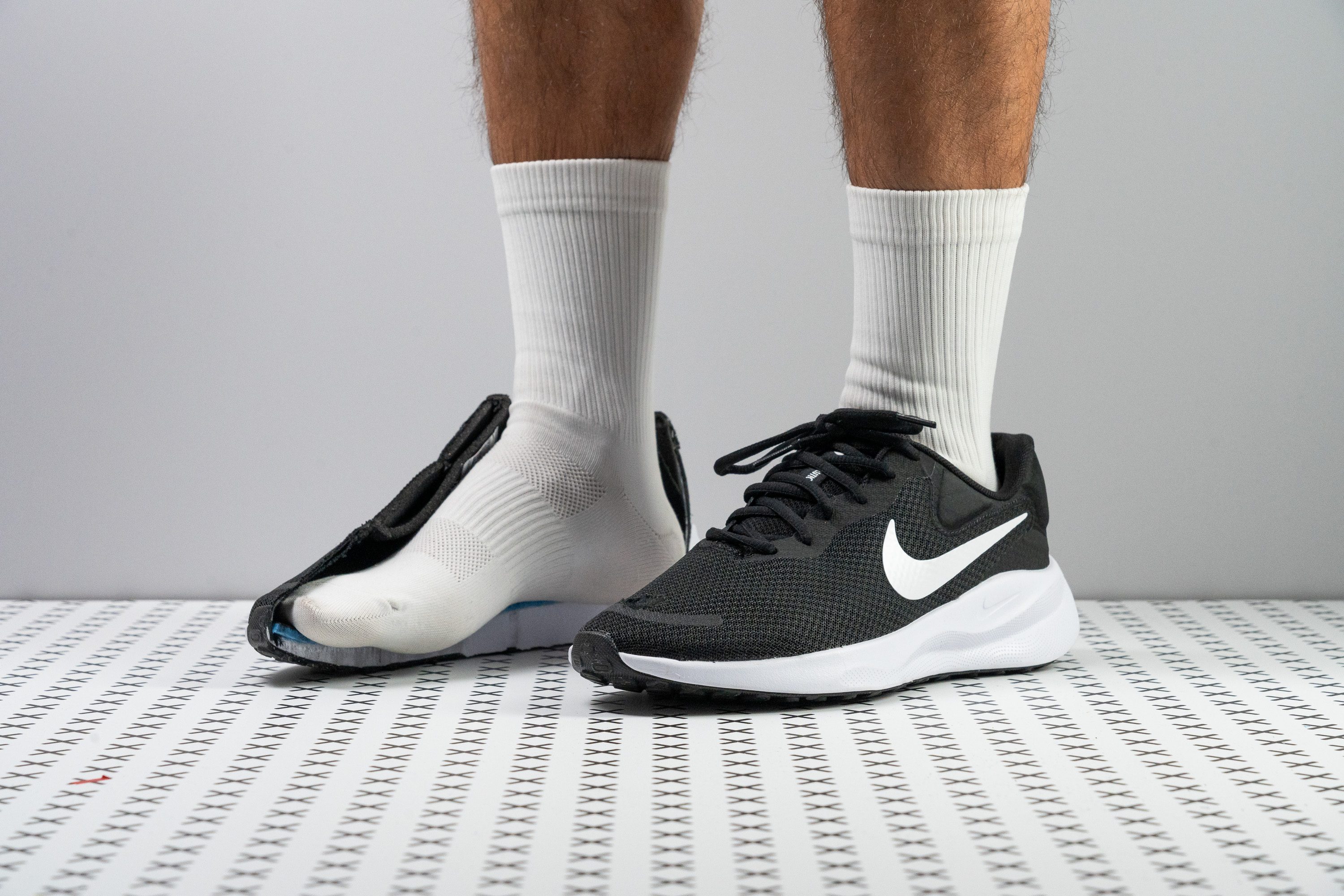Our verdict
- Top pick in best Nike road running shoes (2024)
Pros
- Excellent value
- Spacious, comfortable upper
- Can double for gym workouts
- Really flexible
- Perfect for beginners and heel strikers
- Durable outsole
- Acceptable weight for its size
Cons
- Stiff cushioning
- Poor ventilation
- Minimal bounce-back
Audience verdict
- Top 19% most popular running shoes
Comparison
The most similar running shoes compared
+ + Add a shoe | |||||
|---|---|---|---|---|---|
| Audience score | 80 Good! | 79 Good! | 79 Good! | 81 Good! | |
| Price | $70 | $70 | $70 | $75 | |
| Pace | Daily running | Daily running | Daily running | Daily running | |
| Arch support | Neutral | Neutral | Neutral | Neutral | |
| Weight lab Weight brand | 9.9 oz / 281g 10 oz / 283g | 9.3 oz / 264g 10 oz / 283g | 9.3 oz / 264g 9.5 oz / 270g | 10.5 oz / 298g 9.9 oz / 280g | |
| Drop lab Drop brand | 10.5 mm 10.0 mm | 9.6 mm 8.0 mm | 8.8 mm 10.0 mm | 9.4 mm 10.0 mm | |
| Strike pattern | Heel | HeelMid/forefoot | HeelMid/forefoot | HeelMid/forefoot | |
| Size | True to size | Slightly small | True to size | Slightly small | |
| Midsole softness | Balanced | Balanced | Balanced | Firm | |
| Difference in midsole softness in cold | Small | Normal | Normal | Small | |
| Toebox durability | Bad | Decent | Good | Bad | |
| Heel padding durability | Good | Bad | Good | Bad | |
| Outsole durability | Decent | Decent | Decent | - | |
| Breathability | Moderate | Moderate | Moderate | Moderate | |
| Width / fit | Medium | Medium | Medium | Medium | |
| Toebox width | Medium | Wide | Medium | Medium | |
| Stiffness | Moderate | Moderate | Flexible | Moderate | |
| Torsional rigidity | Moderate | Moderate | Moderate | Moderate | |
| Heel counter stiffness | Moderate | Moderate | Stiff | Moderate | |
| Heel lab Heel brand | 31.5 mm 31.0 mm | 30.8 mm 30.0 mm | 31.8 mm 33.0 mm | 32.0 mm | |
| Forefoot lab Forefoot brand | 21.0 mm 21.0 mm | 21.2 mm 22.0 mm | 23.0 mm 23.0 mm | 22.6 mm | |
| Widths available | NormalWideX-Wide | NormalX-Wide | NormalWideX-Wide | NormalWideX-Wide | |
| Orthotic friendly | ✓ | ✓ | ✓ | ✓ | |
| Season | All seasons | All seasons | All seasons | All seasons | |
| Removable insole | ✓ | ✓ | ✓ | ✓ | |
| Ranking | #579 Bottom 11% | #321 Bottom 13% | #316 Bottom 14% | #287 Bottom 22% | |
| Popularity | #122 Top 19% | #266 Bottom 28% | #65 Top 18% | #101 Top 28% |
Who should buy
After testing the Revolution 7 in the lab, we're convinced it's a top pick for:
- Budget-conscious runners seeking a reliable and versatile trainer that can easily double as a walking or gym shoe.
- Individuals with wider feet who appreciate a comfortable fit, finding in the Revolution 7 a budget-friendly option without sacrificing quality.
- Those who prefer a firmer ride in their running shoes, as the Revolution 7 meets their needs without breaking the bank.
We were particularly impressed by its versatility and the value it offers, especially for those on a budget.
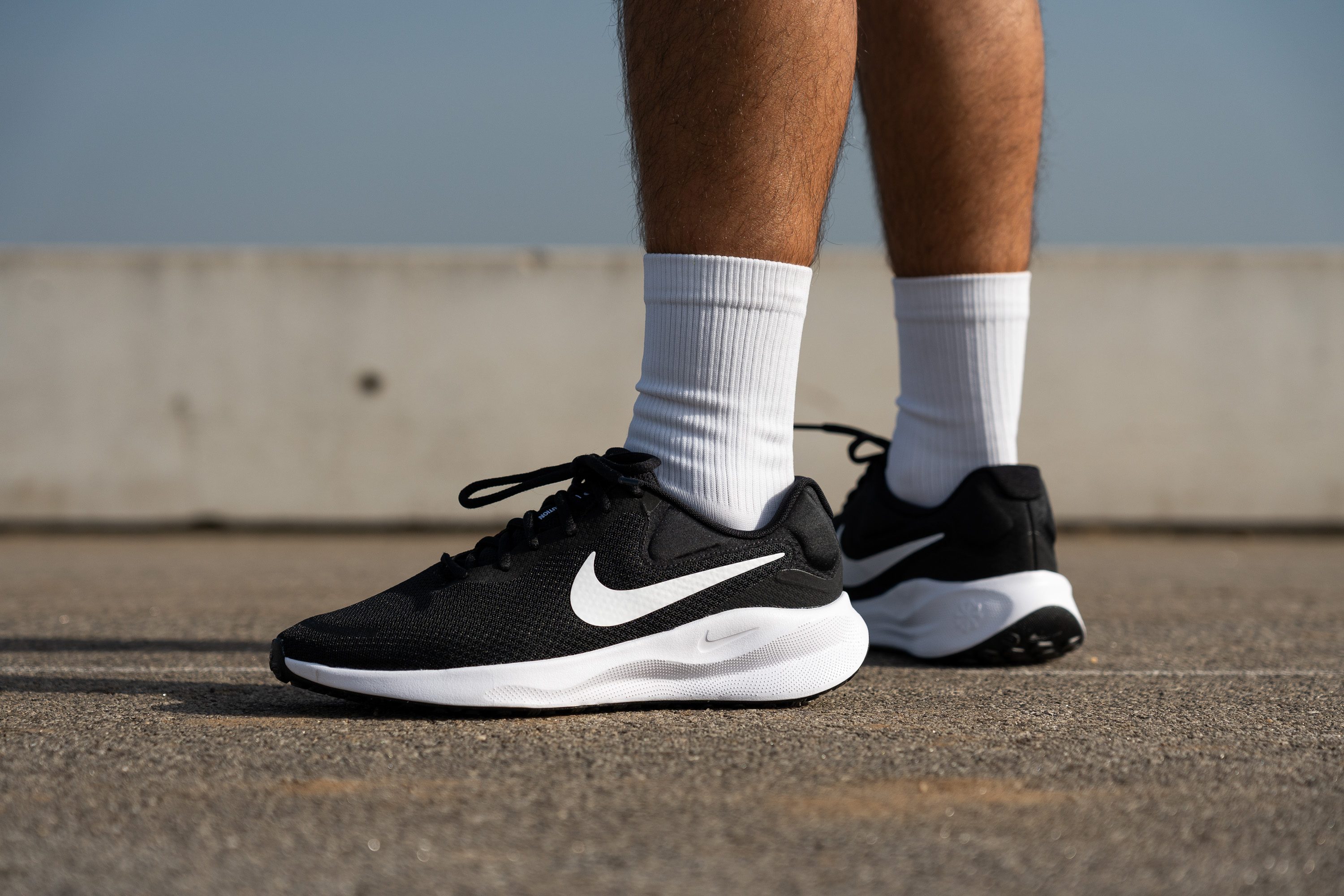
Who should NOT buy
We can't recommend the Revolution 7 for those who prefer a softer feel underfoot, as it tends to run quite firm. Instead, we think the Nike Winflo 10 is a better choice, offering a more comfortable ride without breaking the bank.
Moreover, we believe the Revolution 7 is not the best option for midfoot and forefoot strikers, as it lacks sufficient cushioning in these areas.
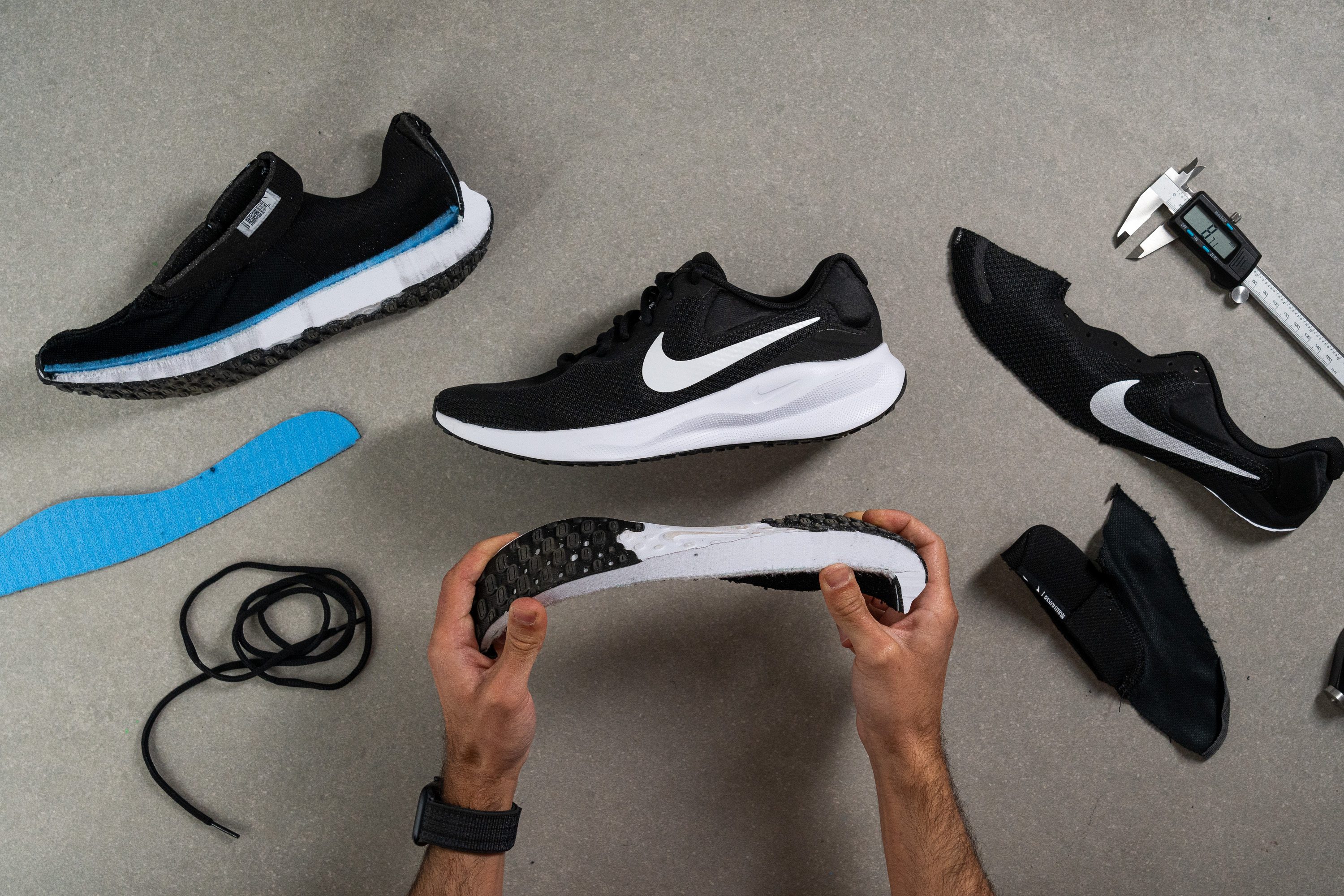
We suggest the Saucony Axon 3 as a viable alternative. It provides a much more cushioned experience, benefiting both midfoot and forefoot strikers, along with other advantages such as enhanced energy return and breathability.
Cushioning
Shock absorption
Shock absorption is clearly limited, which leads us to believe this shoe is a better match for casual use and occasional short weekend runs. It scored just 98 SA in the heel and a low 77 SA in the forefoot.

| Revolution 7 | 98 SA |
| Average | 129 SA |
Energy return
We tested this cheap running shoe using the ASTM F1976 protocol and found one of the lowest energy return scores from Nike so far: 49.5%.
| Revolution 7 | 49.7% |
| Average | 58.6% |
Heel stack
We took again our calipers and measured the heel stack of the Revolution 7 at 31.5 mm, making it an average height by today's standards.
This thickness provides plenty of cushioning for heel strikers, and we think it's a solid choice for a daily trainer.
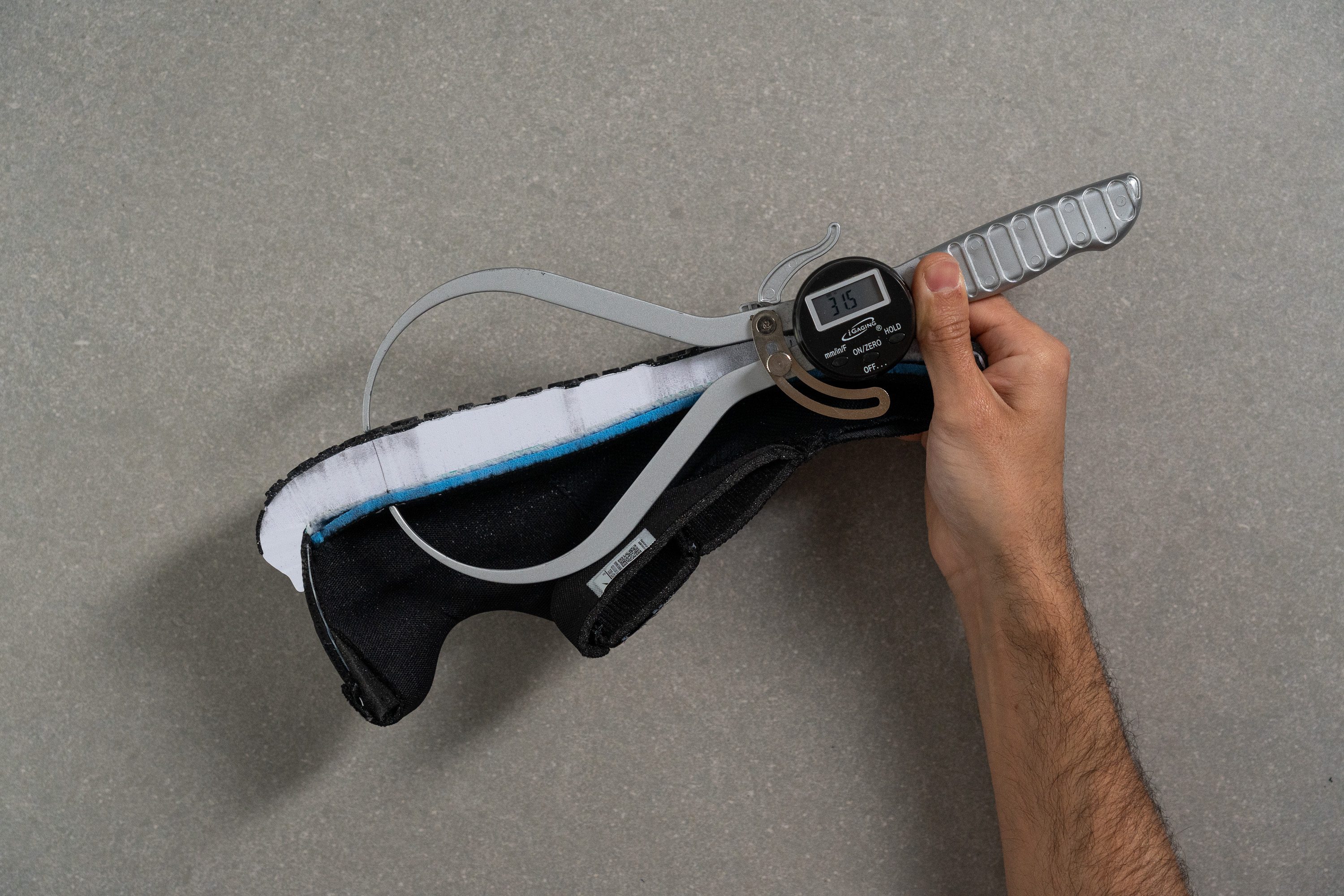
| Revolution 7 | 31.5 mm |
| Average | 34.7 mm |
Forefoot stack
The forefoot tells a slightly different story, measuring a bit thinner than average at 21.0 mm. Once you account for the insole and outsole, there's likely less foam than what a forefoot striker might want, particularly for medium and long runs.
This leads us to believe that this shoe is definitely designed with heel strikers in mind.
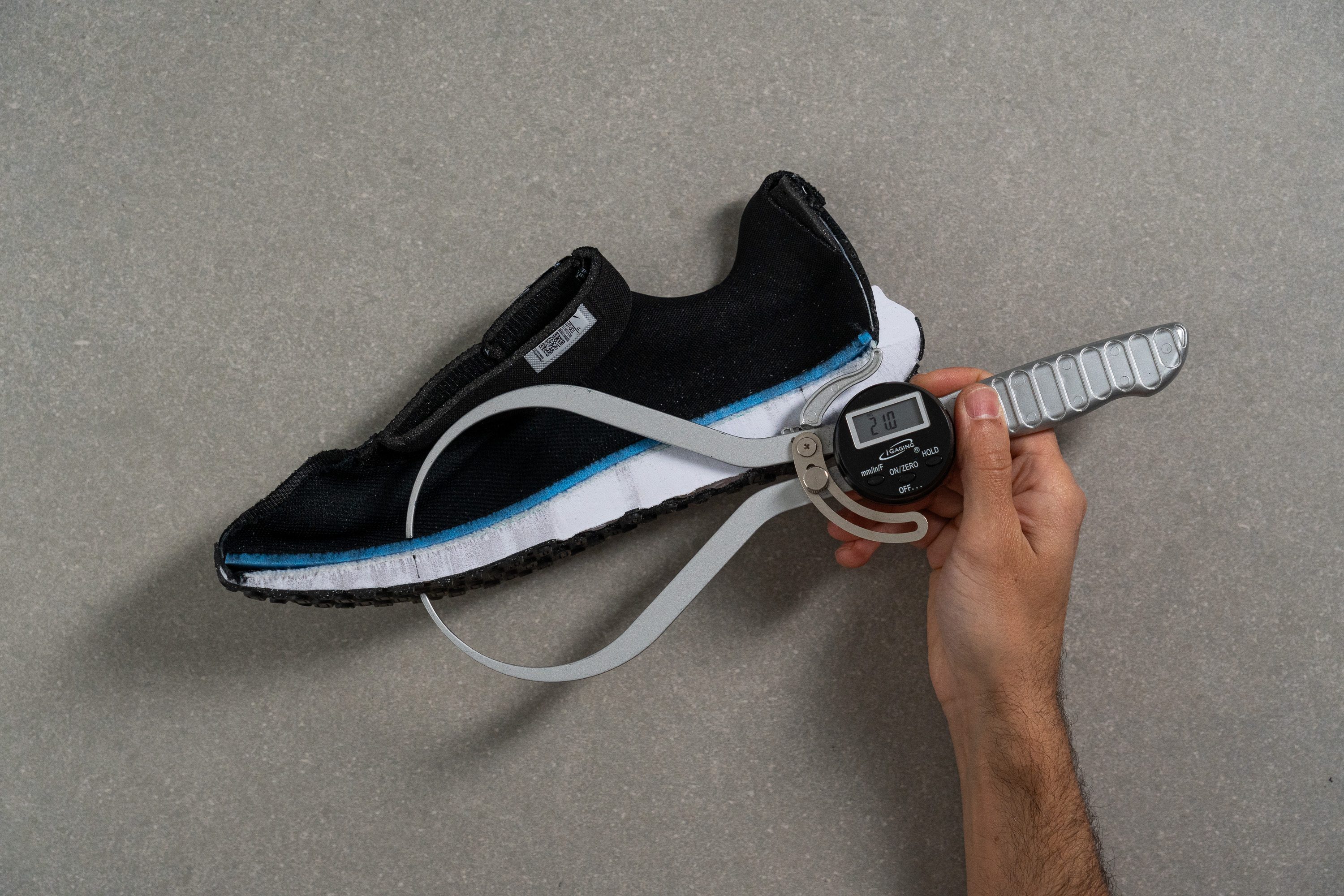
| Revolution 7 | 21.0 mm |
| Average | 26.1 mm |
Drop
We calculated the drop—the difference in height between the heel and forefoot—to be 10.5 mm.
As mentioned earlier, we're of the opinion that this design subtly leans in favor of heel strikers. It also caters to midfoot or forefoot strikers who favor this specific geometry because it helps offload stress from the posterior chain and provides relief for calf or Achilles tendon pain.

| Revolution 7 | 10.5 mm |
| Average | 8.6 mm |
Midsole softness
Shifting our focus to the midsole, the Revolution 7 uses Nike's Phylon, an EVA-based midsole that leans towards the firmer side.
We confirmed this through hands-on field tests and by using our Shore A durometer, which gave us a reading of 28.4 HA. This firmness might not be everyone's cup of tea, especially for those seeking a softer, more forgiving ride.
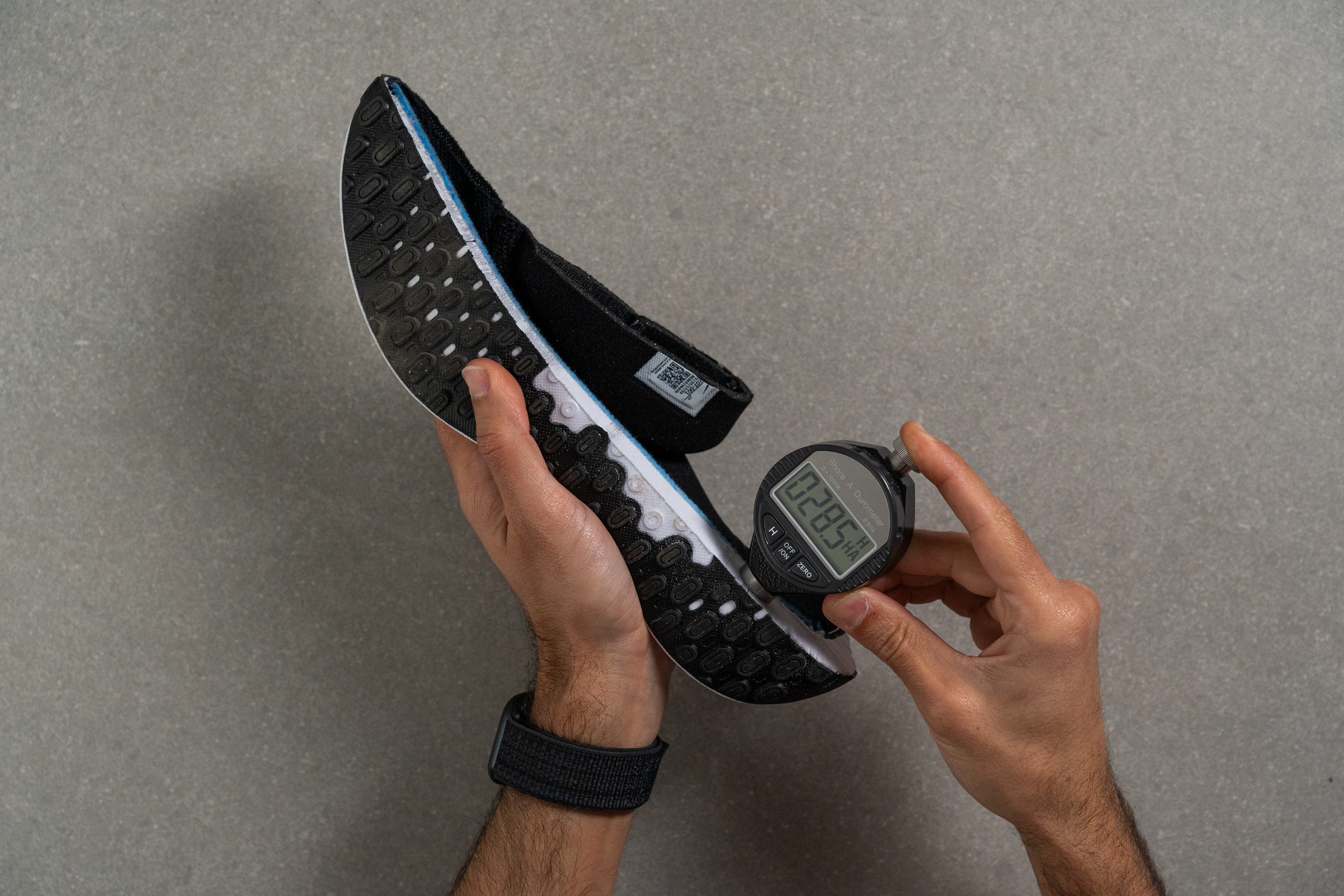
| Revolution 7 | 28.4 HA |
| Average | 20.4 HA |
Size and fit
Size
Nike Revolution 7 fits true to size (109 votes).
Width / Fit
Our first measurement is always taken at the widest part, and the Revolution measured an average 95.3 mm, accommodating most runners comfortably.
This is a shoe for everyday miles, so it's no surprise that it registered around the average.
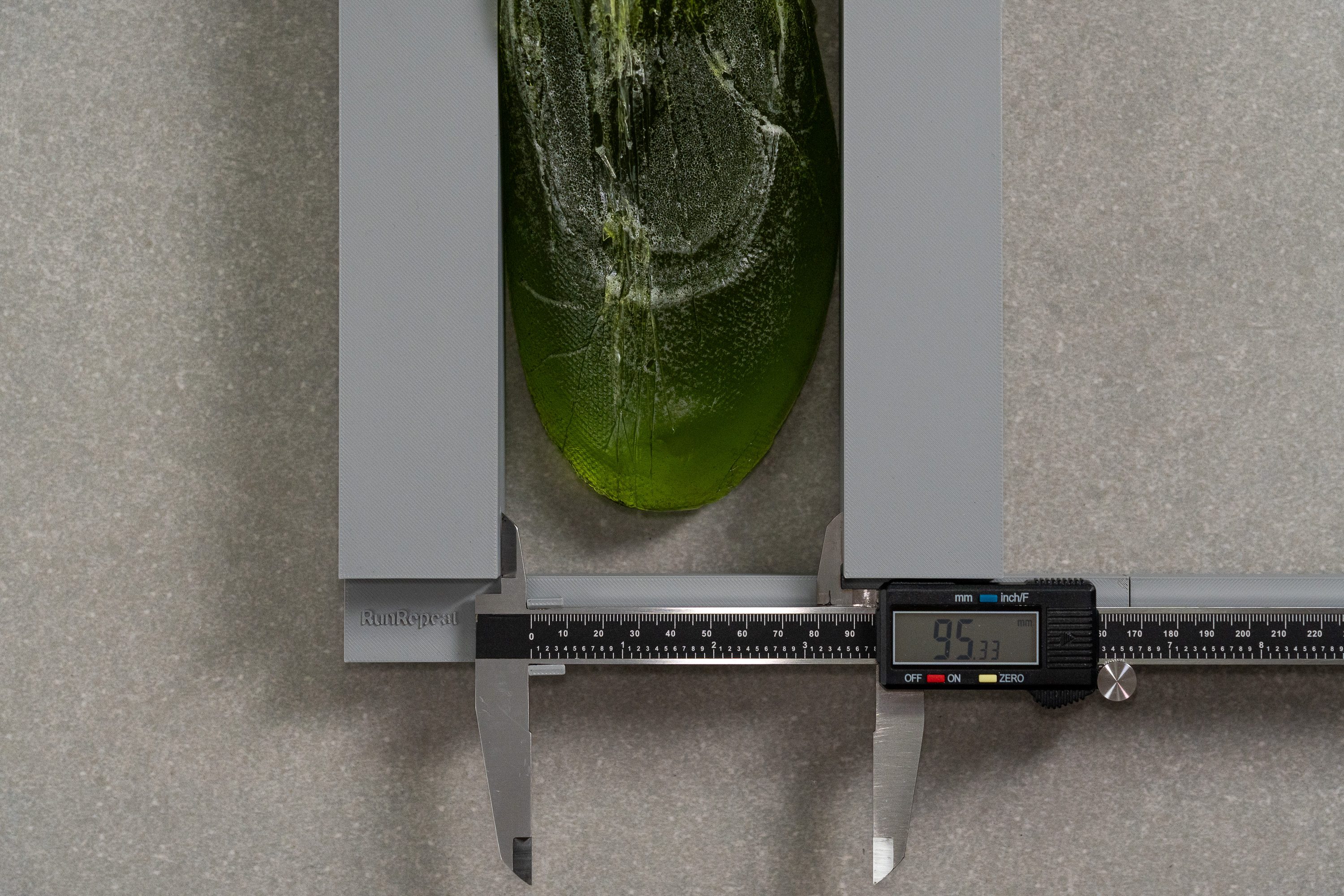
| Revolution 7 | 95.3 mm |
| Average | 95.1 mm |
Toebox width
The shoe features a noticeable taper in the big toe area, measuring 72.1 mm, which is not ideal for wide feet.
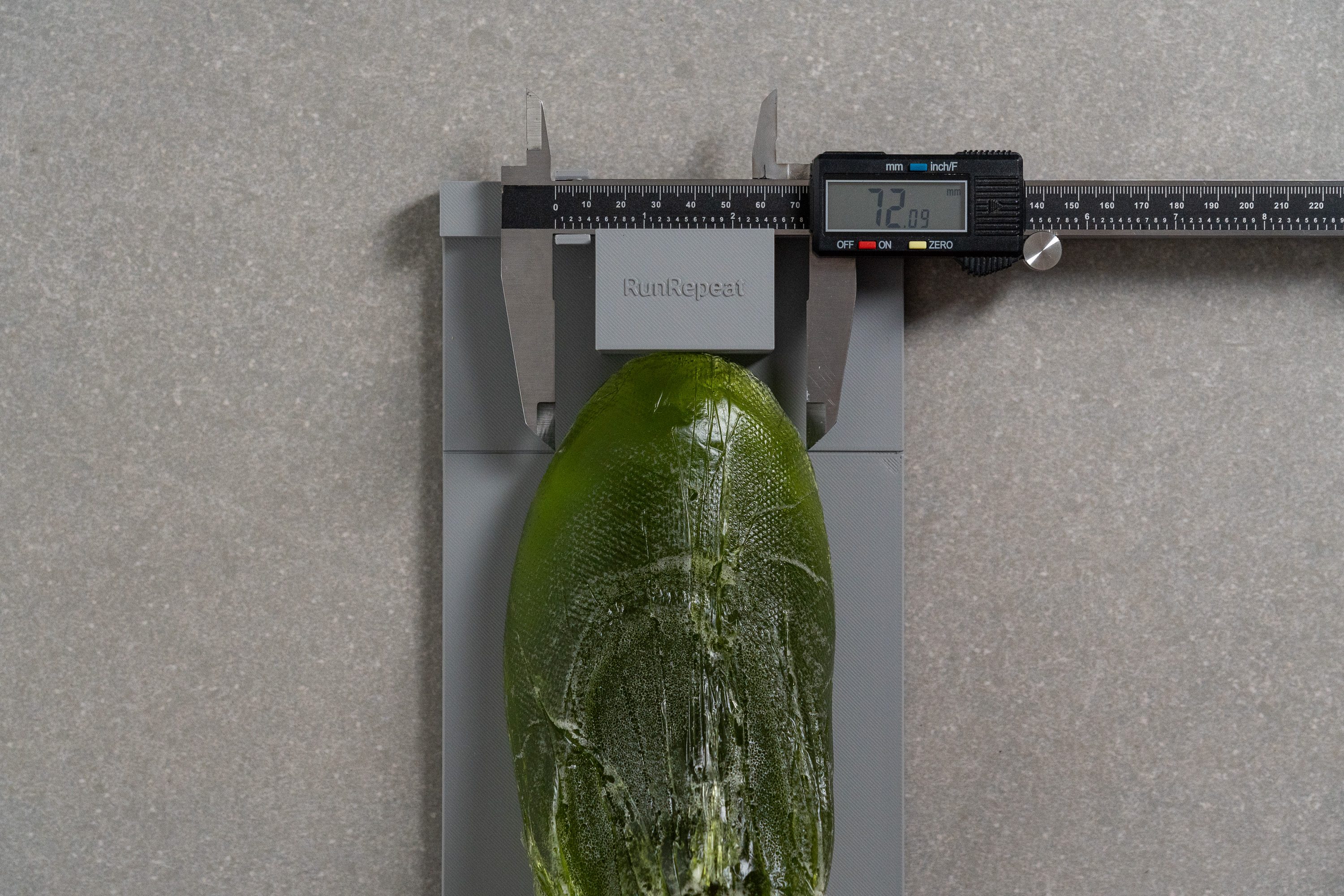
| Revolution 7 | 72.1 mm |
| Average | 73.3 mm |
Toebox height
The toebox height in the Revolution 7 leans toward a low-profile design, leaving limited room for toe movement. We measured 25.5 mm—well below the average—making it ideal for those who prefer a snug, locked-in feel.
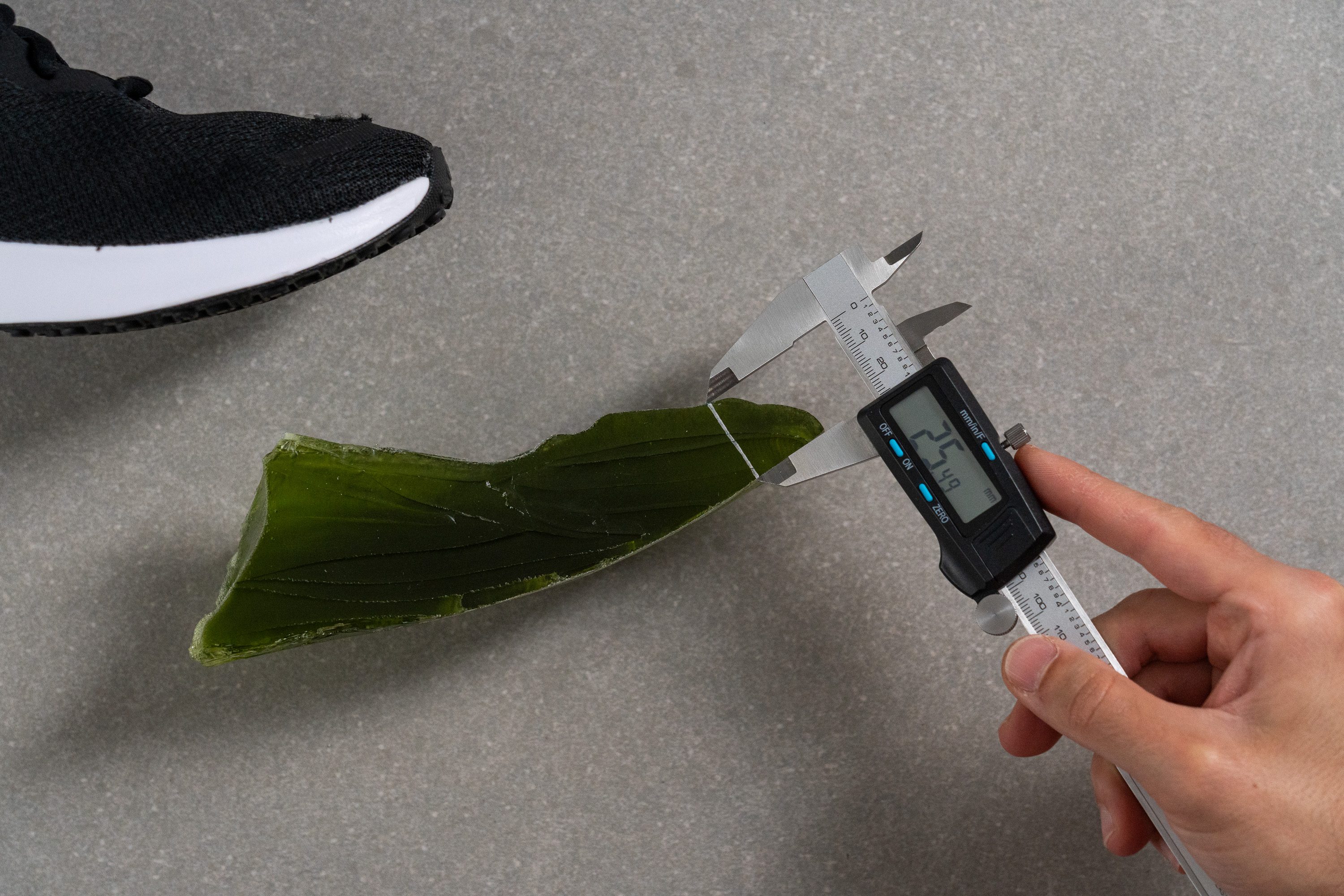
| Revolution 7 | 25.5 mm |
| Average | 27.1 mm |
Traction / Grip
Traction test
Even with its wallet-friendly price, the Revolution 7 surprised us with reliable grip on both wet and dry roads. Its score may fall below the lab average, but for this price range, the traction is not bad at all.
We found in the lab that any shoe scoring above 0.40 in our grip test handles rainy weather well—this model included. Hence, for runners looking for dependable traction without breaking the bank, it’s a nice pick.
| Revolution 7 | 0.42 |
| Average | 0.48 |
Outsole design
The outsole design caught our eye with its unique design. It combines a waffle-style pattern with some exposed foam in the midfoot, although it was nice to see that the lateral side is fully covered.

Flexibility / Stiffness
In our earlier test, where we bent and twisted the shoe, we noticed it was quite flexible. To get precise numbers, we used our force gauge.
It took just 12.3N to bend it to 30 degrees, placing it among the most flexible shoes out there. This flexibility is fantastic for comfort, making the Revolution 7 an excellent everyday, do-it-all shoe, perfect for a variety of activities beyond running.
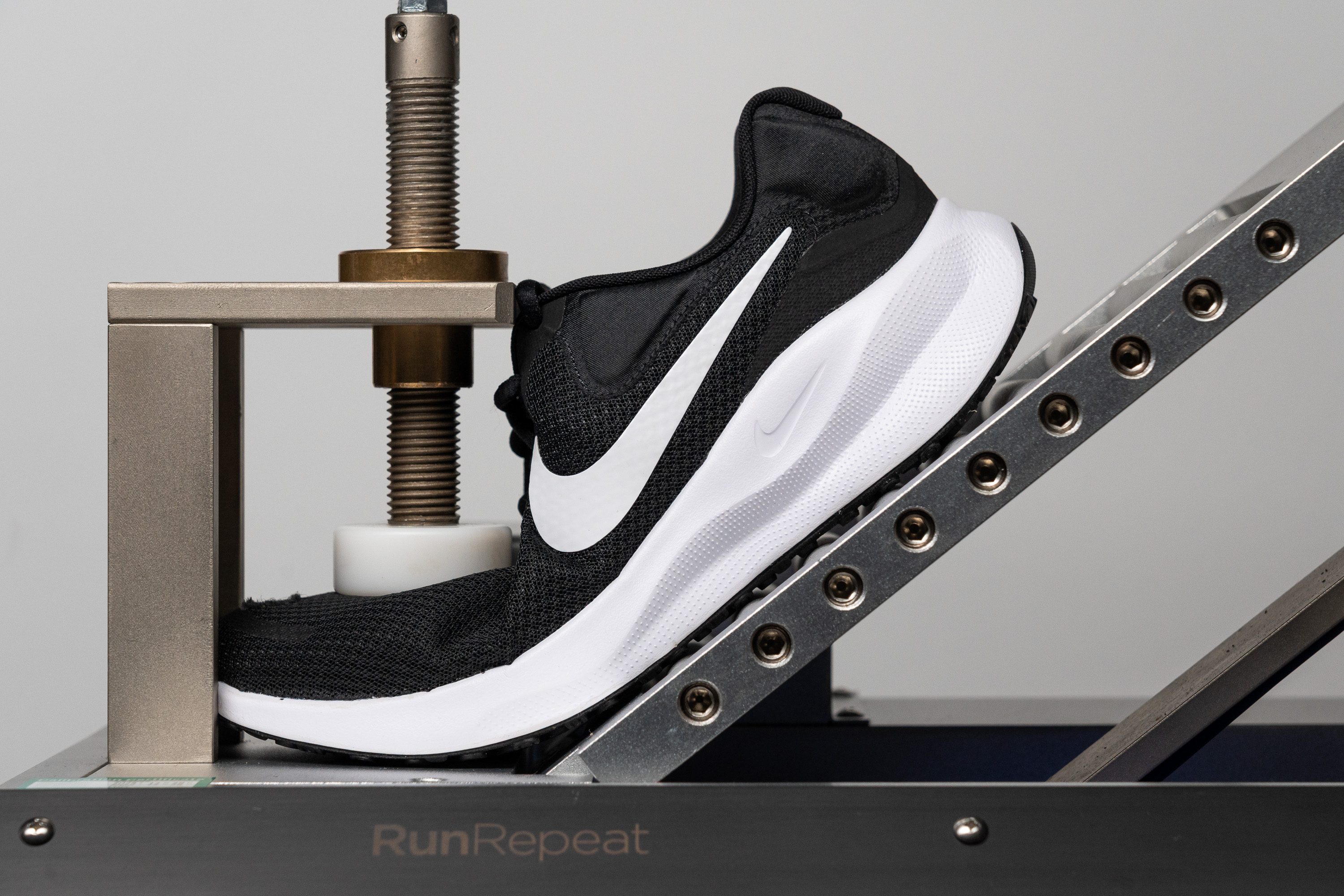
| Revolution 7 | 12.3N |
| Average | 15.2N |
Weight
The Nike Revolution 6 was surprisingly light, and we thought the 7th version might be heavier based on our test runs and the shoe's overall size.
After weighing it, we found it's just under 10 oz at 9.9 oz (281g). Not bad for a budget-friendly, well-cushioned training shoe, but heavier than v6.

| Revolution 7 | 9.9 oz (281g) |
| Average | 9.3 oz (264g) |
Breathability
We kicked off the lab test of the Revolution 7 without a revolution—the smoke test delivered a just-okay result, scoring a 3 out of 5.
The shoe couldn't clear as much smoke as we hoped, leading us to think it might pose minor issues in extreme heat—and this black colorway certainly won't help in such scenario. But it should perform well in every other weather conditions.
Shining a light through the cut-in-half upper helped us assess the breathability of the engineered mesh. Nike seems to have skipped ventilation holes, likely due to the cost of the process, opting instead for a uniform structure throughout the upper.

Our microscope work confirmed this. The mesh is consistent throughout, showing no variation.
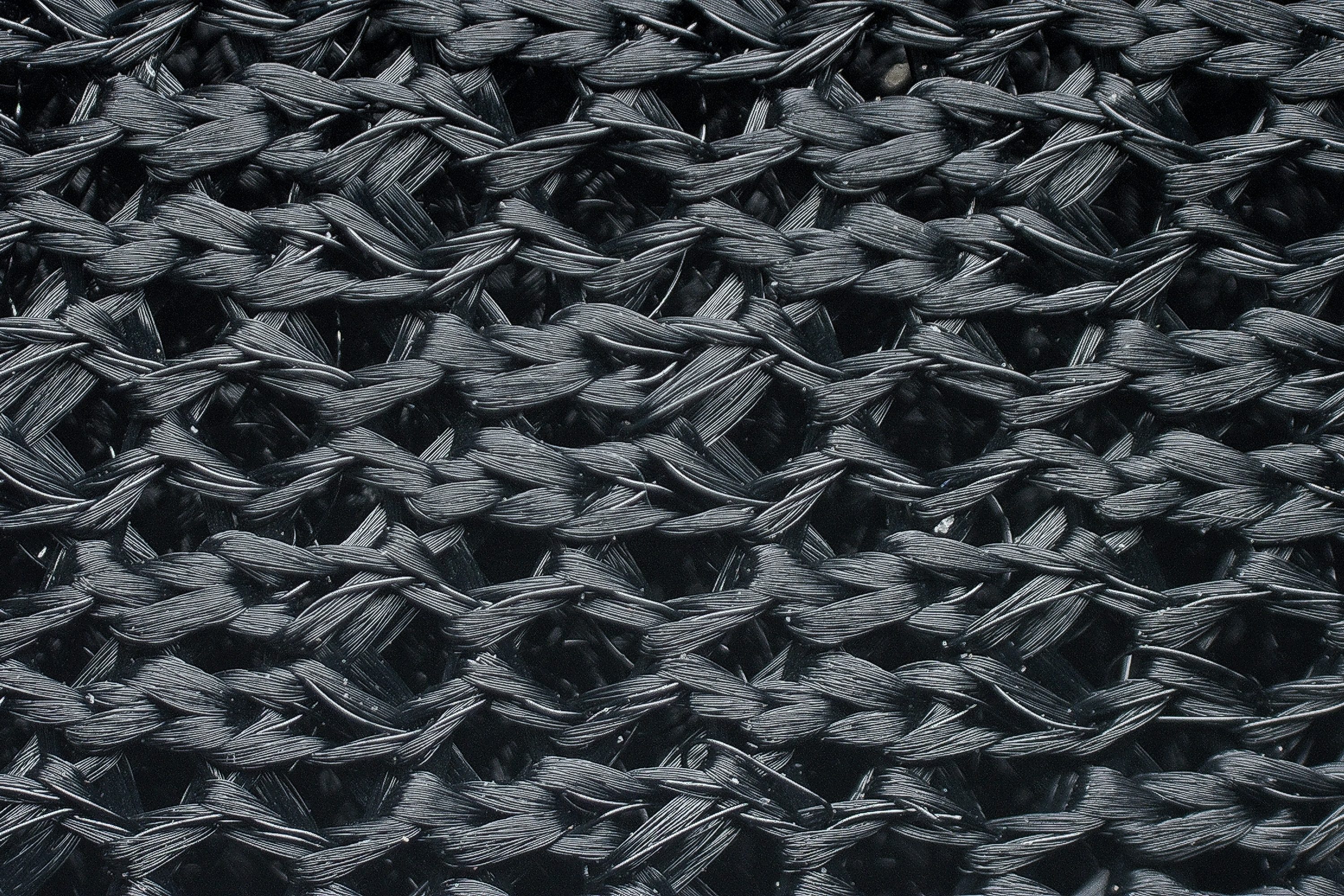
While there's room for improvement in breathability, we get that it's a budget-friendly option, and compromises are part of the deal.
Examining the upper closely, we noticed it features two layers and the padding all around the shoe is impressive. Nike has clearly put comfort first—not bad for a $70 shoe!
| Revolution 7 | 3 |
| Average | 3.7 |
Stability
Lateral stability test
The Revolution 7 really steps up the game in stability, thanks to its firm midsole. It's a fantastic trade-off for those looking for that extra bit of support who don't mind the extra firmness, and it makes the shoe better suited for those with mild stability issues.
Torsional rigidity
We noticed a bit of resistance when we twisted and bent the shoe, but it was nothing extreme. To us, this earns a solid 3 out of 5, striking a nice balance between stability and comfort.
| Revolution 7 | 3 |
| Average | 3.5 |
Heel counter stiffness
The heel counter takes the same approach and also earns a 3 out of 5 from us. It's designed to suit nearly everyone, featuring a semi-rigid piece that adds structure, especially at the lower part of the heel. Plus, the area is well-padded, offering ample comfort.
| Revolution 7 | 3 |
| Average | 2.9 |
Midsole width - forefoot
For our next two measurements, we brought back the digital caliper.
We measured 114.7 mm in the widest part of the forefoot, which is in line with what we've seen in previous sections—Nike sticks to an average approach without taking any risks.
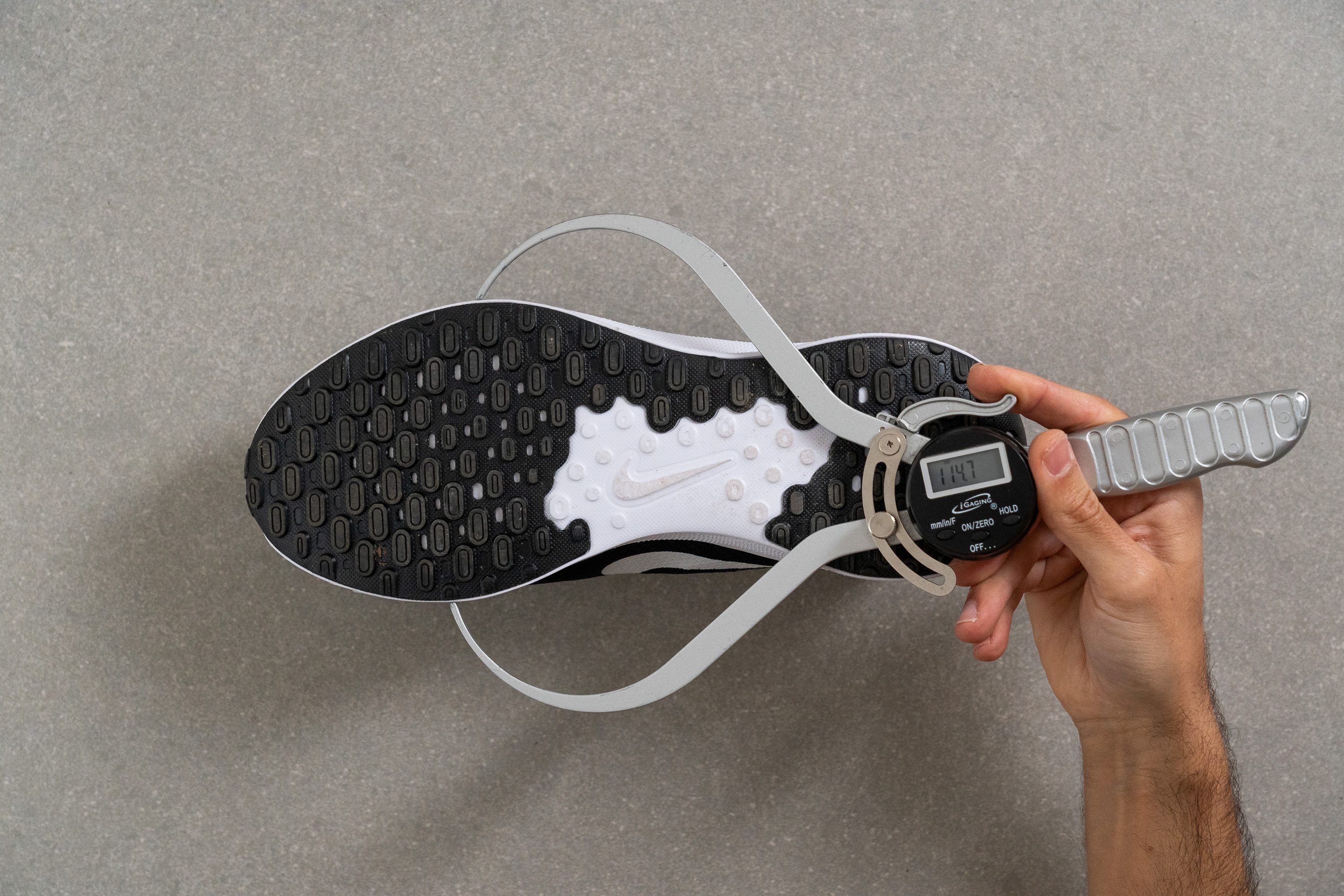
| Revolution 7 | 114.7 mm |
| Average | 114.3 mm |
Midsole width - heel
In the lab, we found the heel to be a bit wider than usual at 93.1 mm, but it's not a huge difference. However, like we mentioned with the stack height and drop, the Revolution 7 is definitely aimed at heel strikers.
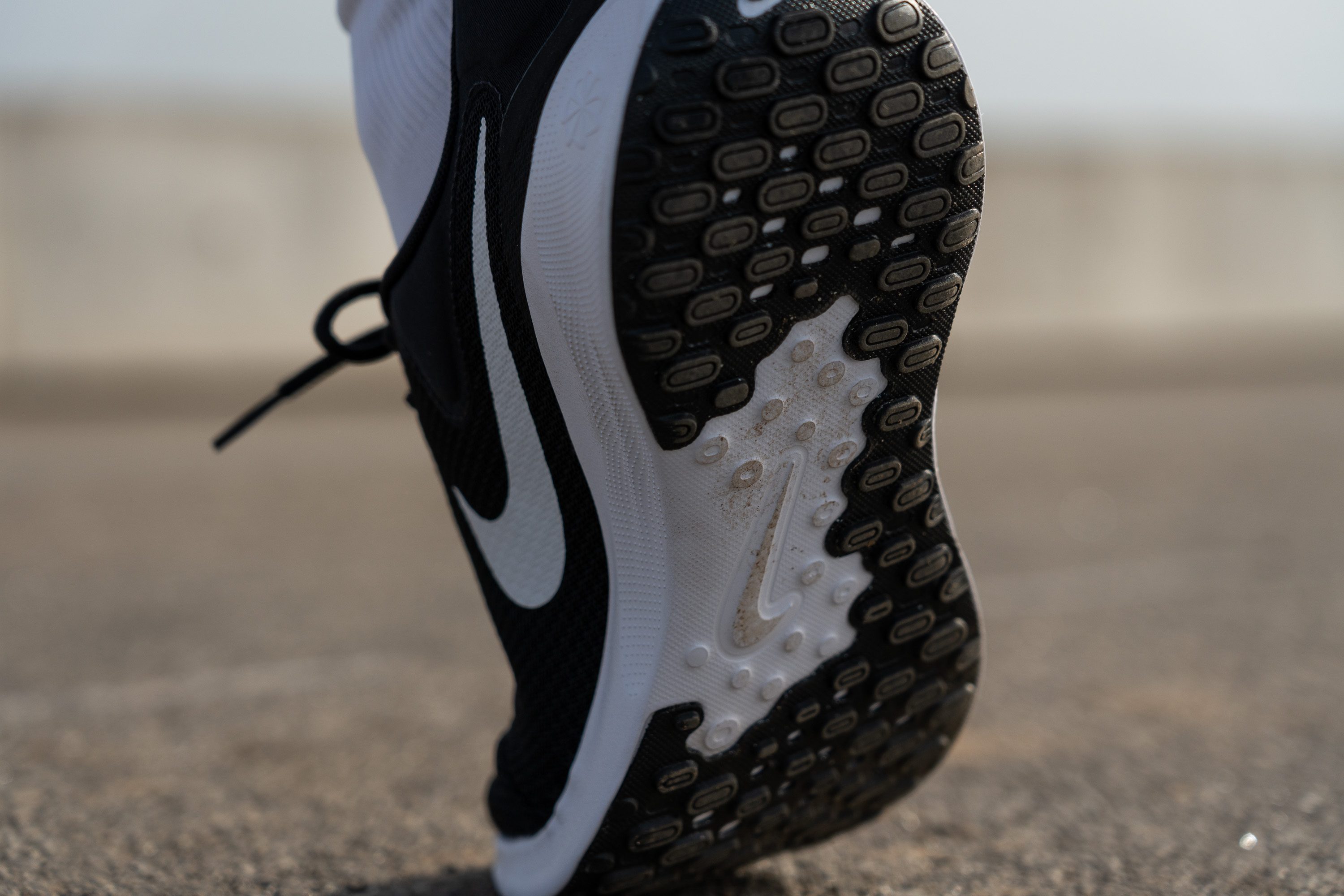
Designing a shoe is all about making trade-offs. A major one is between the shoe's dimensions and its weight. Our lab data shows that Nike chose to limit the forefoot width to make room for a wider heel, all while keeping the shoe's weight under 10 ounces.

| Revolution 7 | 93.1 mm |
| Average | 90.7 mm |
Durability
Toebox durability
After checking out the airflow, we moved on to testing the shoe's durability. We started with the toebox.
It was a real wake-up call. The Revolution 7 just didn't stand a chance against the tool, scraping by with a teeth-grinding 1 out of 5 for pretty terrible performance. The hole left behind tells the whole story.
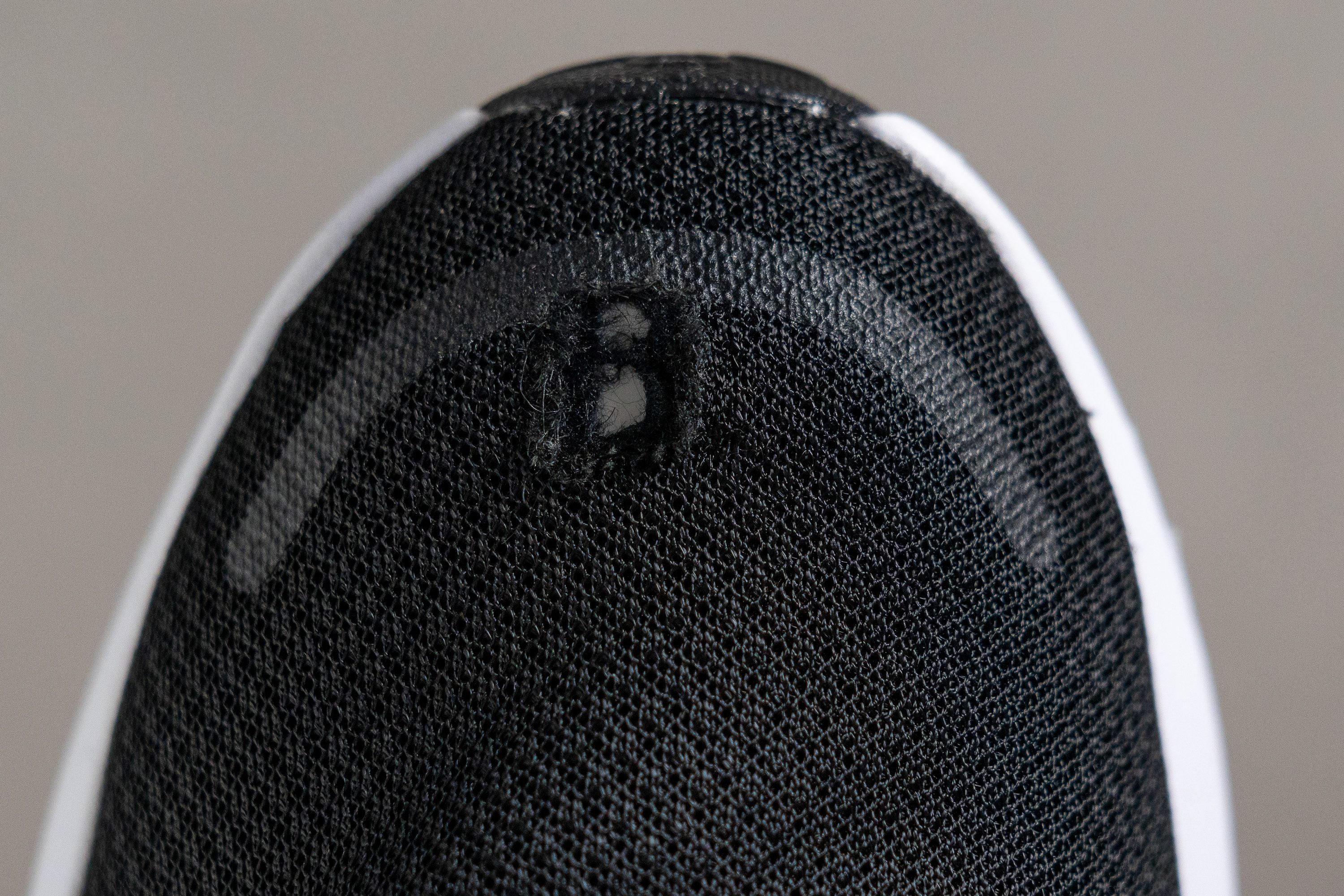
| Revolution 7 | 1 |
| Average | 2.6 |
Heel padding durability
But then, we found a complete turnaround when we got to the heel—something the Revolution 7 desperately needed.
In this area, the Dremel barely made a dent, managing only minor damage. As a result, the shoe scored an impressive 4 out of 5.
This marked a significant improvement, giving us a glimmer of hope that the Revolution 7 has some strong suits after all. The heel's resilience made us curious about what other surprises it might hold.
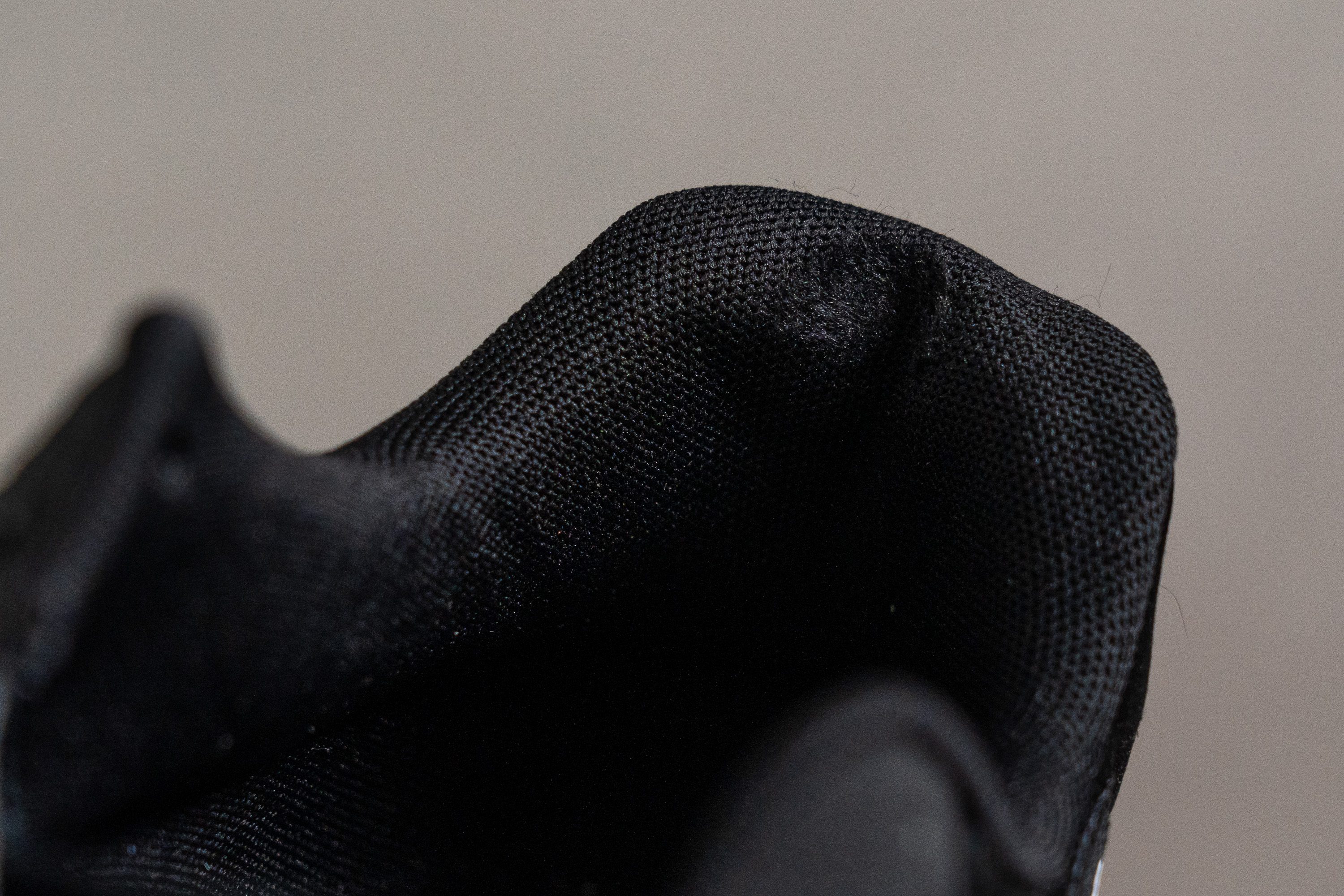
| Revolution 7 | 4 |
| Average | 3.4 |
Outsole durability
Given the hard rubber, we were anticipating a strong performance in our Dremel test.
Sadly, things didn't go as planned. A 1.0-mm indentation isn't terrible, but considering the rubber's hardness, it's a tad disappointing. That said, the rubber does achieve its goal—we're confident it will hold up for as long as you're willing to run with the Revolution.
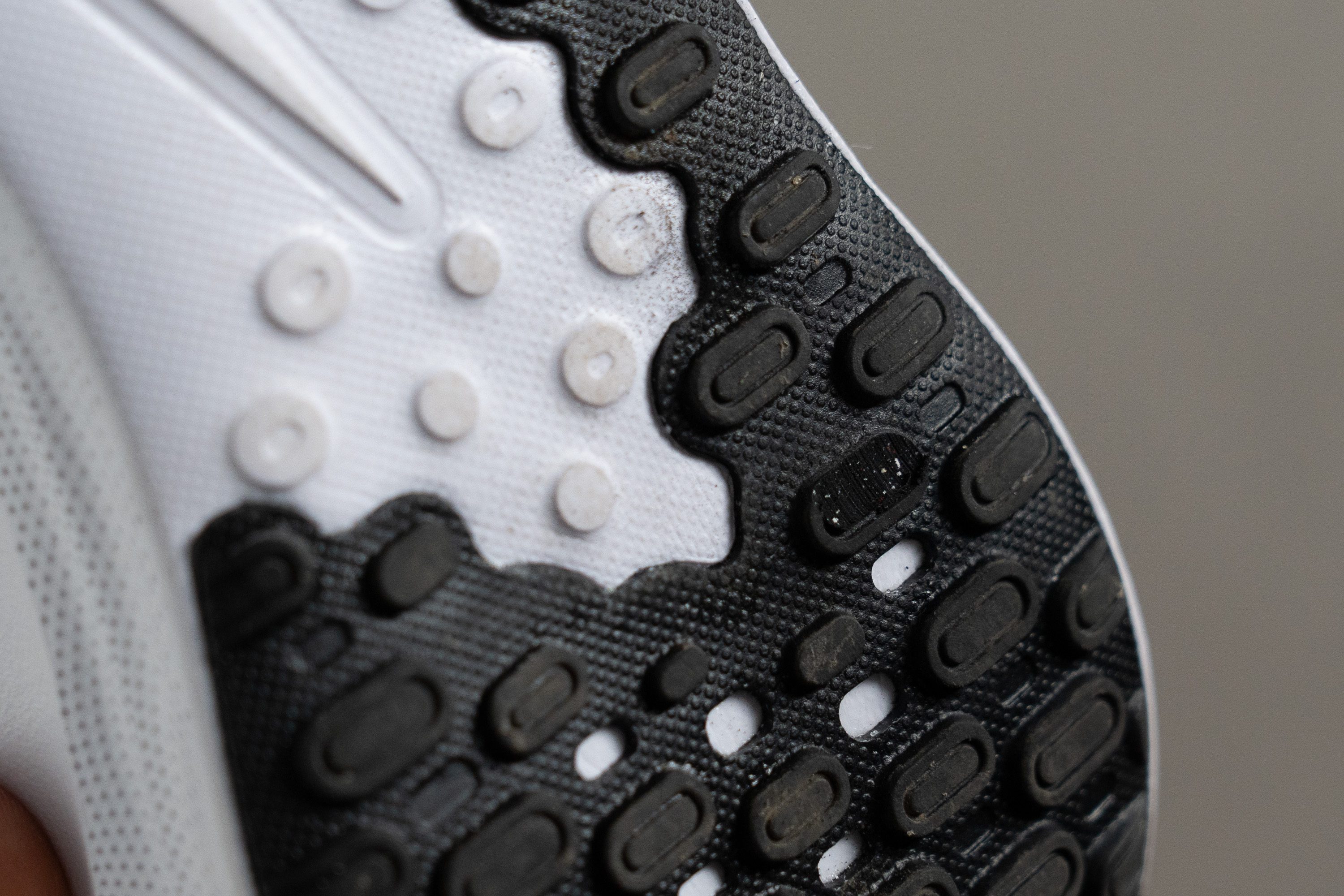
| Revolution 7 | 1.0 mm |
| Average | 1.1 mm |
Outsole thickness
In our comprehensive final evaluation of the outsole, it became clear that Nike chose a cautious approach by incorporating an ample amount of rubber beneath the midsole. To ensure accuracy, we conducted multiple measurements, each confirming a consistent thickness of 3.7 mm.
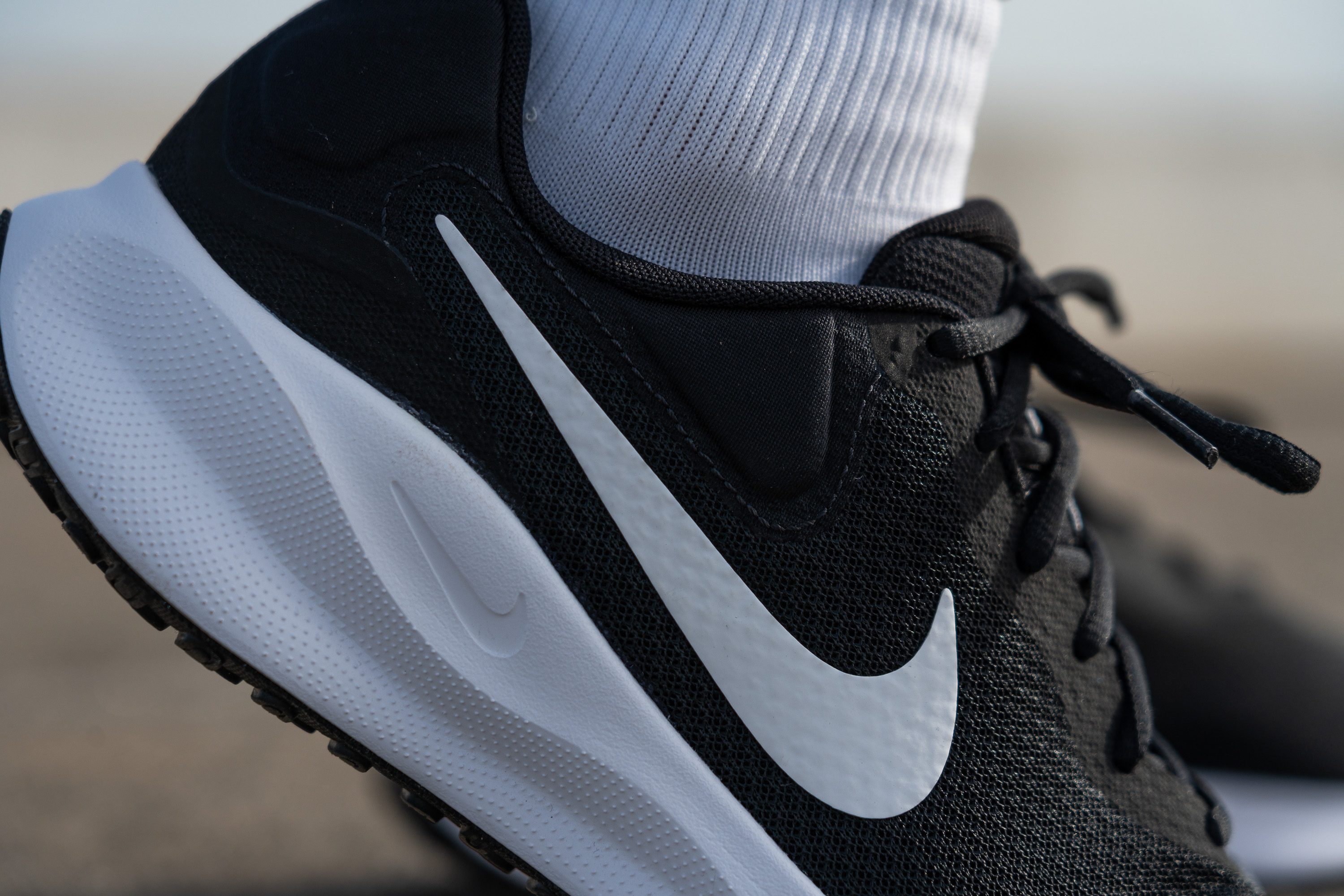
We think this strategy by Nike suggests again a deliberate choice to prioritize longevity and wear resistance in the design of this shoe.
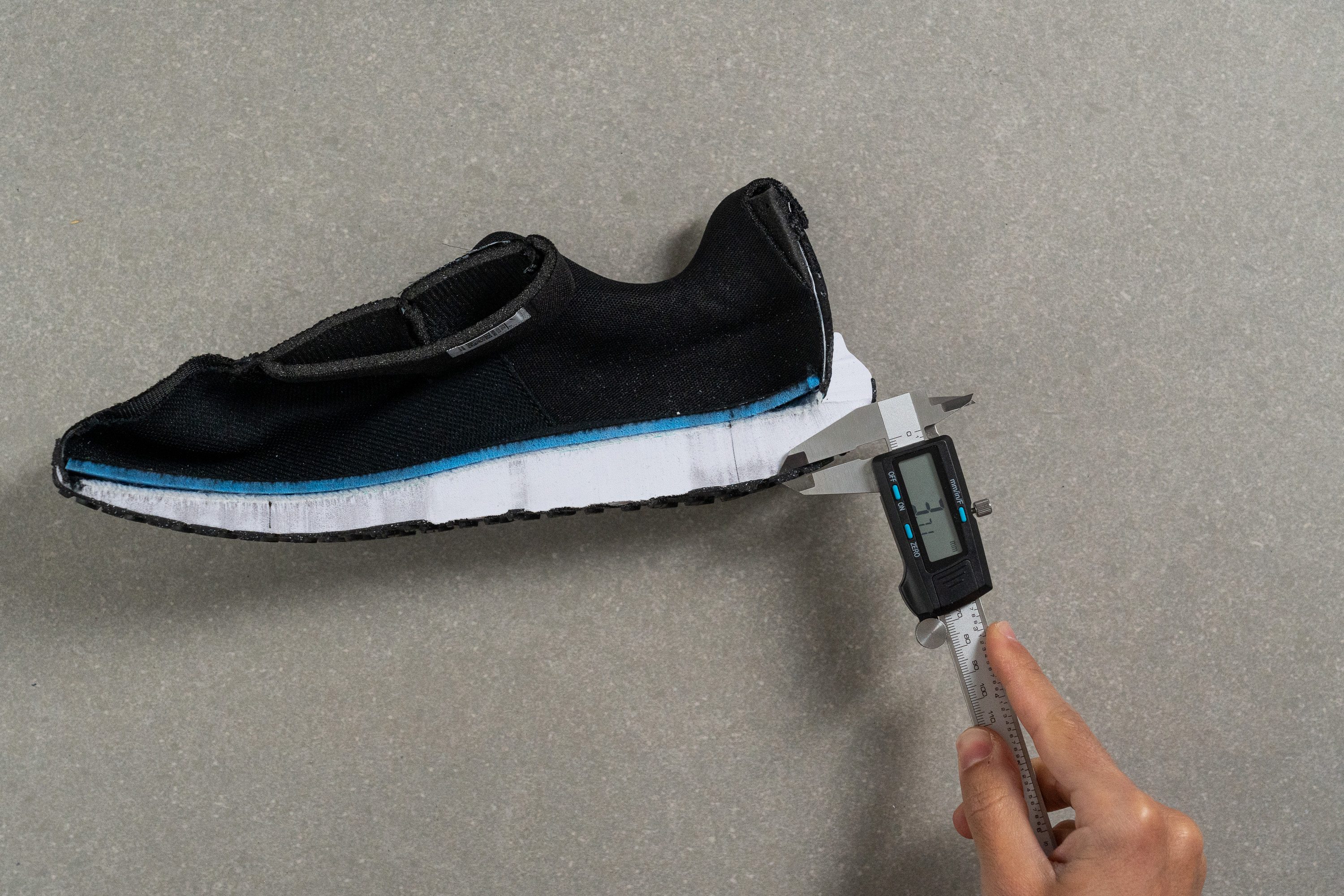
| Revolution 7 | 3.7 mm |
| Average | 3.2 mm |
Misc
Insole thickness
The insole is unexpectedly thin, measuring just 3.6 mm.
This surprised us, as we're usually accustomed to finding thick insoles in budget-friendly shoes since it's an inexpensive method to enhance comfort and stack height. However, the Revolution takes a different approach.
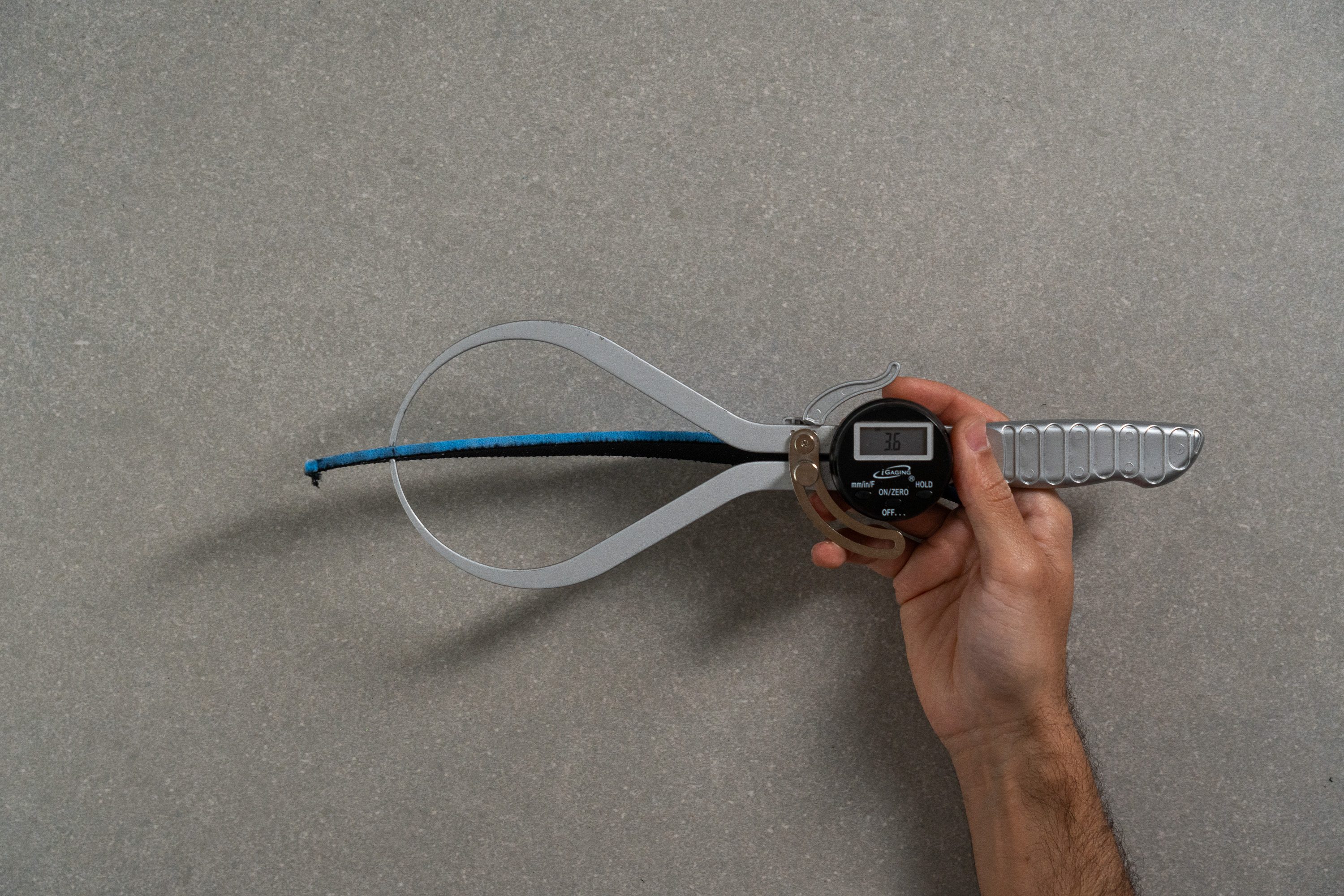
| Revolution 7 | 3.6 mm |
| Average | 4.5 mm |
Removable insole
The insole is removable, easy to take out if needed. Plus, since the shoe's dimensions are pretty standard, most over-the-counter insoles or even those from other shoes fit nicely without any hassle.

| Revolution 7 | Yes |
Midsole softness in cold (%)
Phylon is a midsole crafted from EVA foam pellets that are compressed, heat-expanded, and then cooled in a mold. This manufacturing technique ensures superior performance in cold temperatures when compared to the traditional EVA.
Because of that, we found that this shoe only became 9.2% firmer after spending 20 minutes in the freezer, showcasing remarkable resilience. Such outstanding cold-weather performance is especially impressive for a $70 shoe.

| Revolution 7 | 9% |
| Average | 24% |
Reflective elements
For $70, we don't expect anything extraordinary, so it's fine if the Revolution 7 doesn't have reflective elements. It's a fair deal.

| Revolution 7 | No |
Tongue padding
The first time we tried on the Revolution 7, we noticed the tongue was extremely plush. Our measurements confirmed it at 10.1 mm thick.
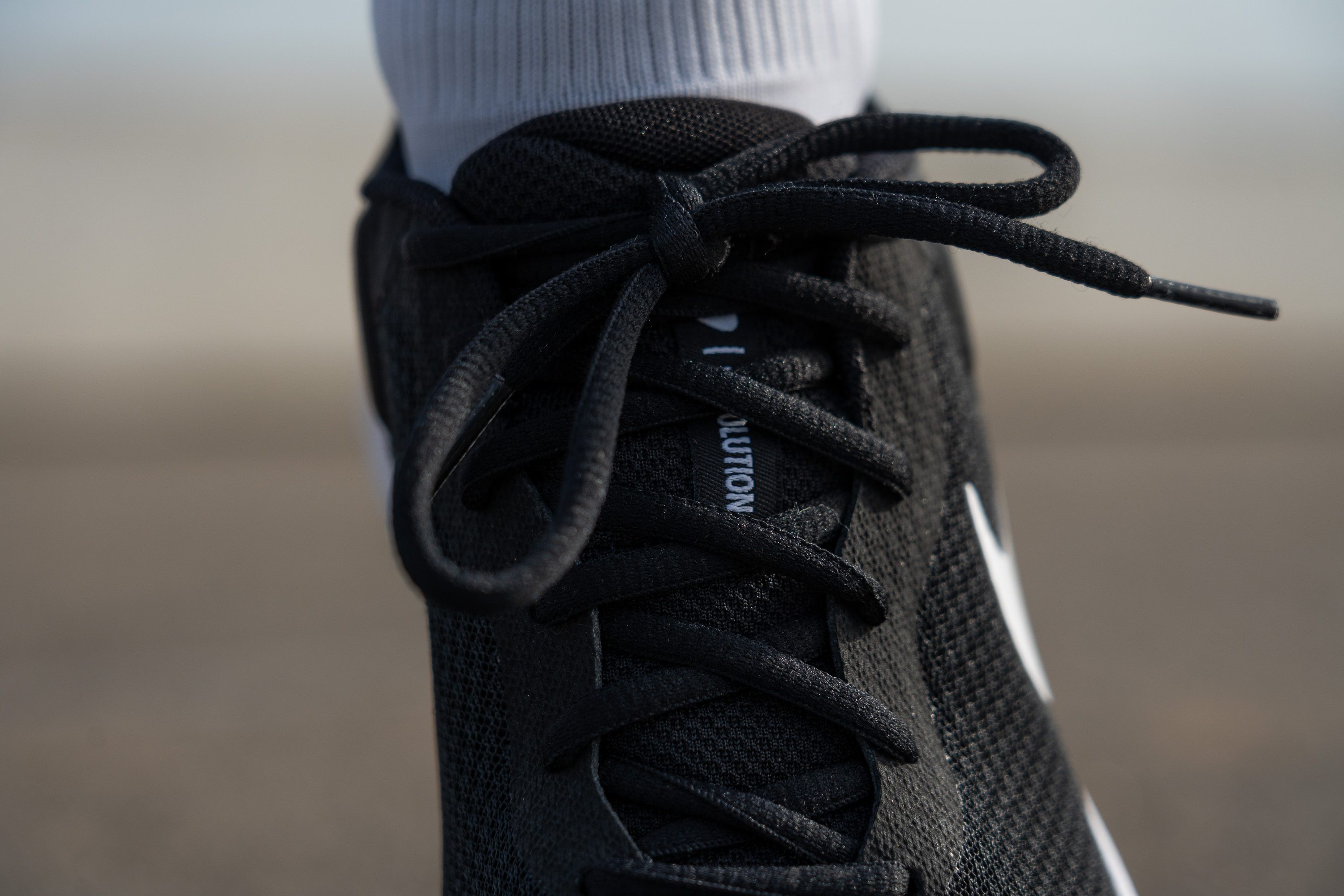
We believe Nike uses this thick padding because it's an inexpensive way to enhance comfort, making this shoe stand out in the budget-friendly price range.
It's a clever strategy, but we think a bit less padding, maybe around 7 or 8 mm, would be better since we don't see the advantage of going thicker than that, and it adds heft to the shoe.
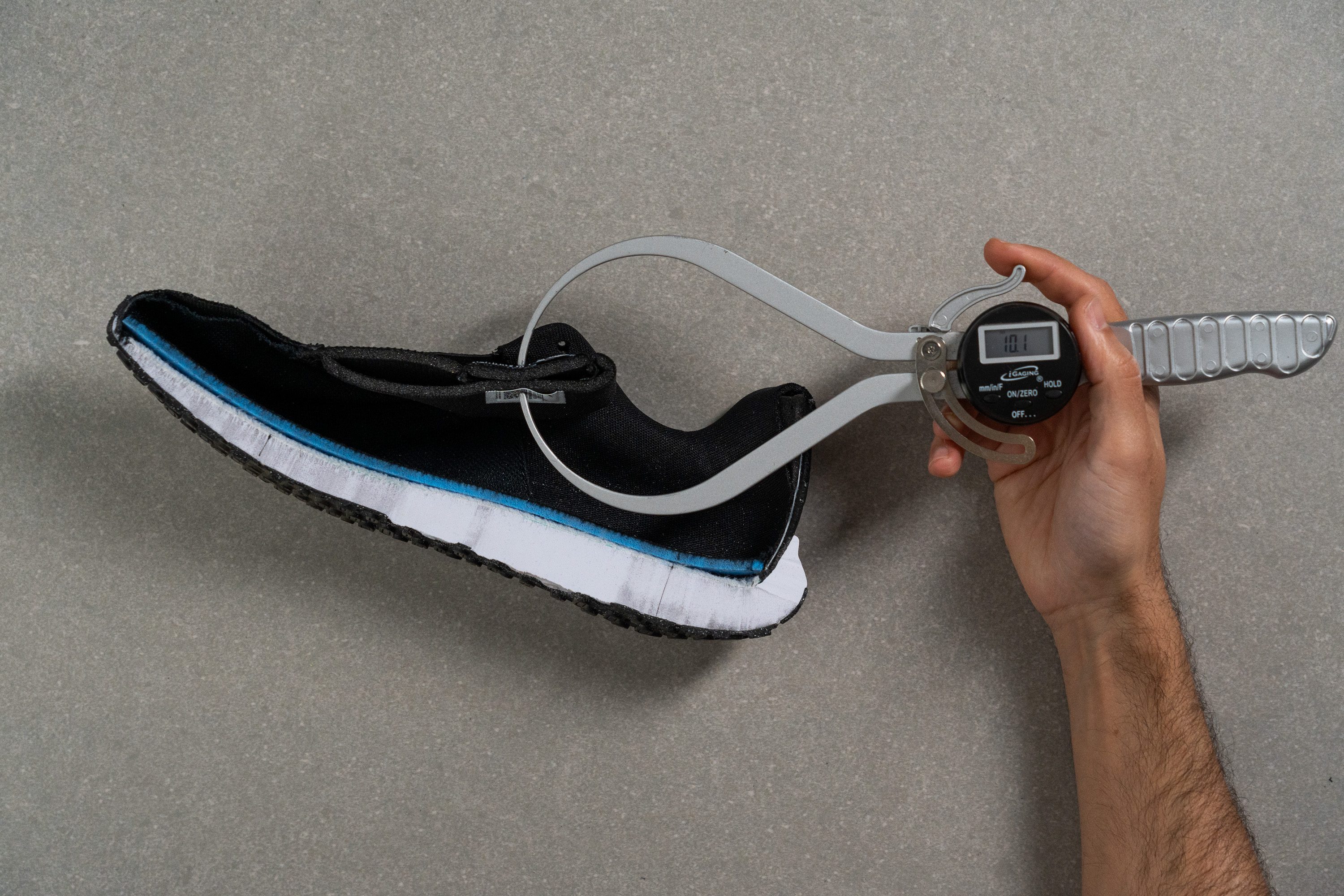
| Revolution 7 | 10.1 mm |
| Average | 5.8 mm |
Tongue: gusset type
An unexpected bonus of the Revolution 7 is its gusseted tongue—a feature often found only in high-end shoes from most brands.
This design keeps the tongue securely in place during all runs, even when picking up the pace. Quite impressive!
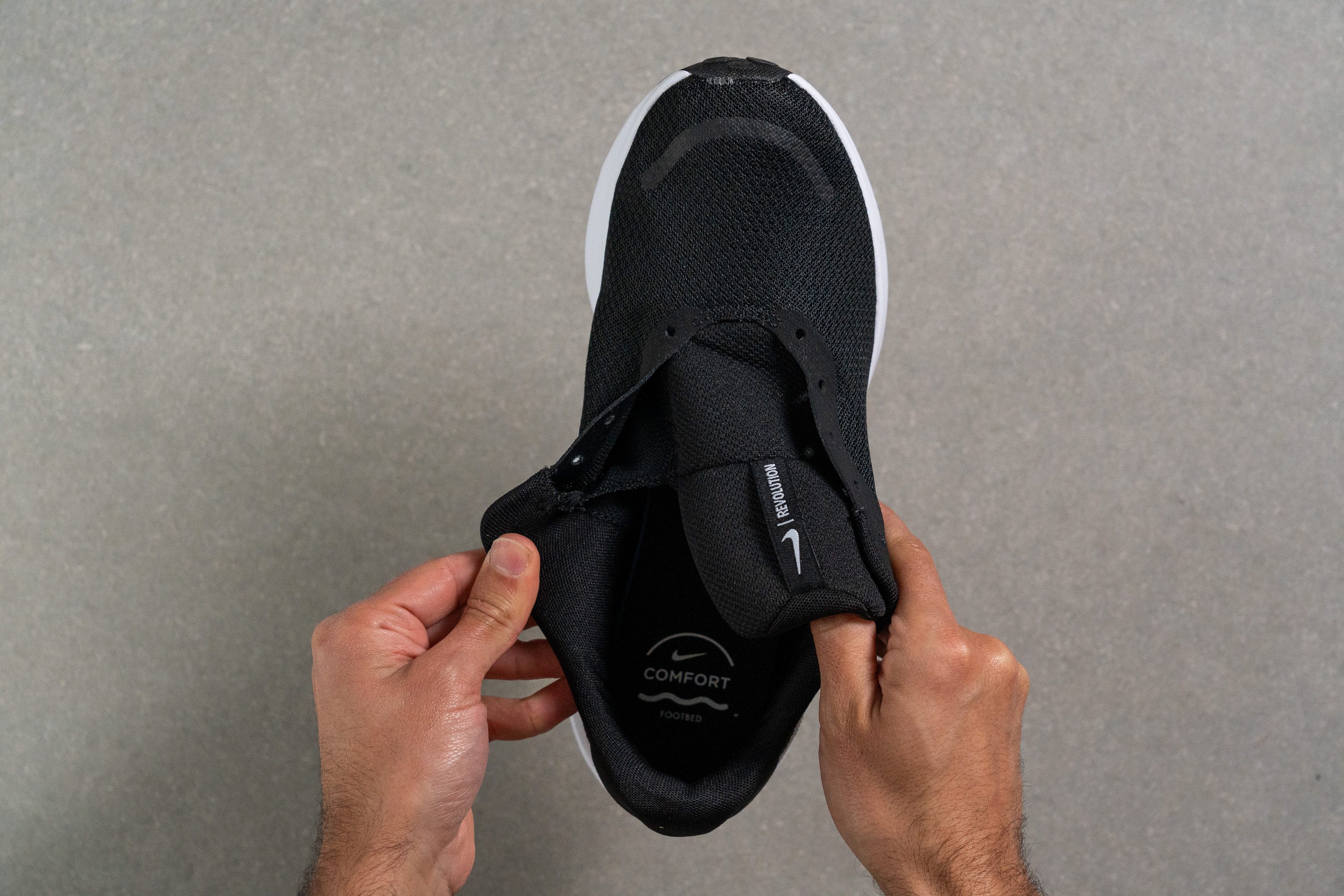
| Revolution 7 | Both sides (full) |
Heel tab
Adding a heel tab means spending more money, and we get why Nike might skip it on one of their more affordable running shoes. If it allows for investment in other areas like a better upper or midsole, why not?
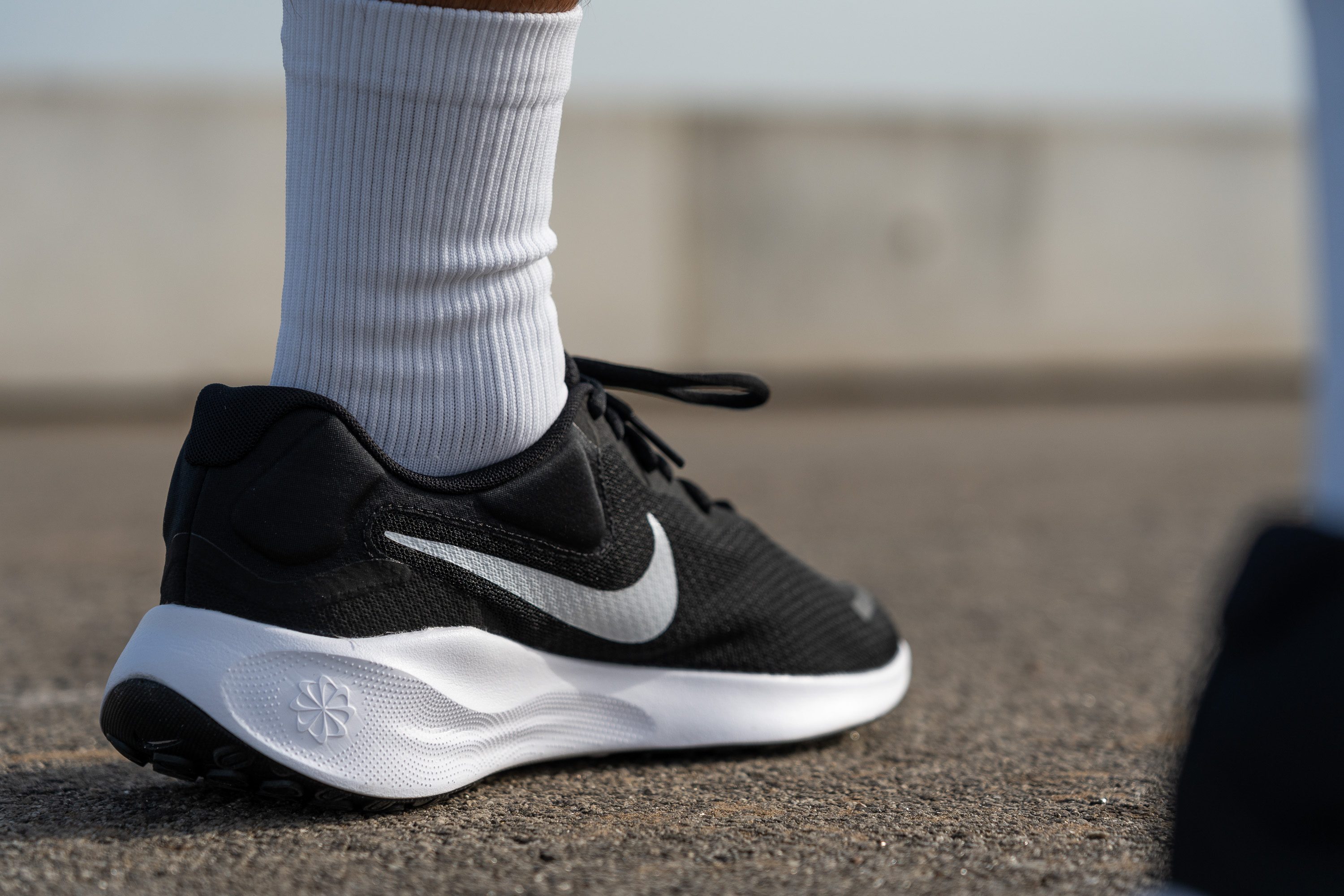
| Revolution 7 | None |

